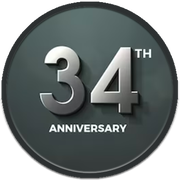SMS Transmission Methods
Last Updated June 22, 2023
Short Code (DSC)
Short codes, also referred to as a short numbers, are sender IDs which are 5-to-6-digit ID numbers that are used to send and receive SMS and MMS (Multimedia Messaging System) messages. Short codes are best used for sending a high volume of messages quickly; however, short codes are very expensive and can only be used to send domestic traffic (e.g., Canadian short codes can only send SMS in Canada.). Plus, some smaller mobile carriers may not support short code messages. In addition, short codes are usually shared with other businesses, sometime hundreds, thus severely limiting the availability of “keywords”. For example, the keyword “special” can only be used by one business. So, if you wanted to use that keyword and it was taken, you would need to find another keyword to use.
Long Code (10DLC)
A long code, also referred to as a long number, is a standard 10-digit number that is used to send and receive SMS messages. As well as being internationally available, long numbers enable businesses to have their own unique number. Long codes are inexpensive and excellent for sending messages that are not time sensitive such as marketing messages, reminders, etc. Long codes are also more personalized which can help build a consistent channel of customer communication. A message that comes from a long code can feel like it is coming from a person rather than a bot, which makes it perfect for providing a personalized customer experience.
Toll Free Number (TFN)
A toll-free number is a type of long code. Generally, they include an area code of 800, 822, 833, 844, 855, 866, 877 or 880–889. Like long codes, these numbers are internationally available. Toll free numbers enable businesses to have their own unique number. Toll free numbers do not incur fees and are cost-effective and an excellent choice for sending messages that are not time sensitive such as marketing messages, reminders, etc.
Long codes are also more personalized which can help build a consistent channel of customer communication. A message that comes from a long code can feel like it is coming from a person rather than a bot which makes it perfect for providing a personalized customer experience.
Short codes, also referred to as a short numbers, are sender IDs which are 5-to-6-digit ID numbers that are used to send and receive SMS and MMS (Multimedia Messaging System) messages. Short codes are best used for sending a high volume of messages quickly; however, short codes are very expensive and can only be used to send domestic traffic (e.g., Canadian short codes can only send SMS in Canada.). Plus, some smaller mobile carriers may not support short code messages. In addition, short codes are usually shared with other businesses, sometime hundreds, thus severely limiting the availability of “keywords”. For example, the keyword “special” can only be used by one business. So, if you wanted to use that keyword and it was taken, you would need to find another keyword to use.
Long Code (10DLC)
A long code, also referred to as a long number, is a standard 10-digit number that is used to send and receive SMS messages. As well as being internationally available, long numbers enable businesses to have their own unique number. Long codes are inexpensive and excellent for sending messages that are not time sensitive such as marketing messages, reminders, etc. Long codes are also more personalized which can help build a consistent channel of customer communication. A message that comes from a long code can feel like it is coming from a person rather than a bot, which makes it perfect for providing a personalized customer experience.
Toll Free Number (TFN)
A toll-free number is a type of long code. Generally, they include an area code of 800, 822, 833, 844, 855, 866, 877 or 880–889. Like long codes, these numbers are internationally available. Toll free numbers enable businesses to have their own unique number. Toll free numbers do not incur fees and are cost-effective and an excellent choice for sending messages that are not time sensitive such as marketing messages, reminders, etc.
Long codes are also more personalized which can help build a consistent channel of customer communication. A message that comes from a long code can feel like it is coming from a person rather than a bot which makes it perfect for providing a personalized customer experience.
anchor: TOSa
Keyword
A keyword is a word or phrase which you create and can be used for promotions and more (i.e. “join”). When a customer texts the keyword to a number, an auto-responder or follow-up message, created by you, is sent to the customer.



